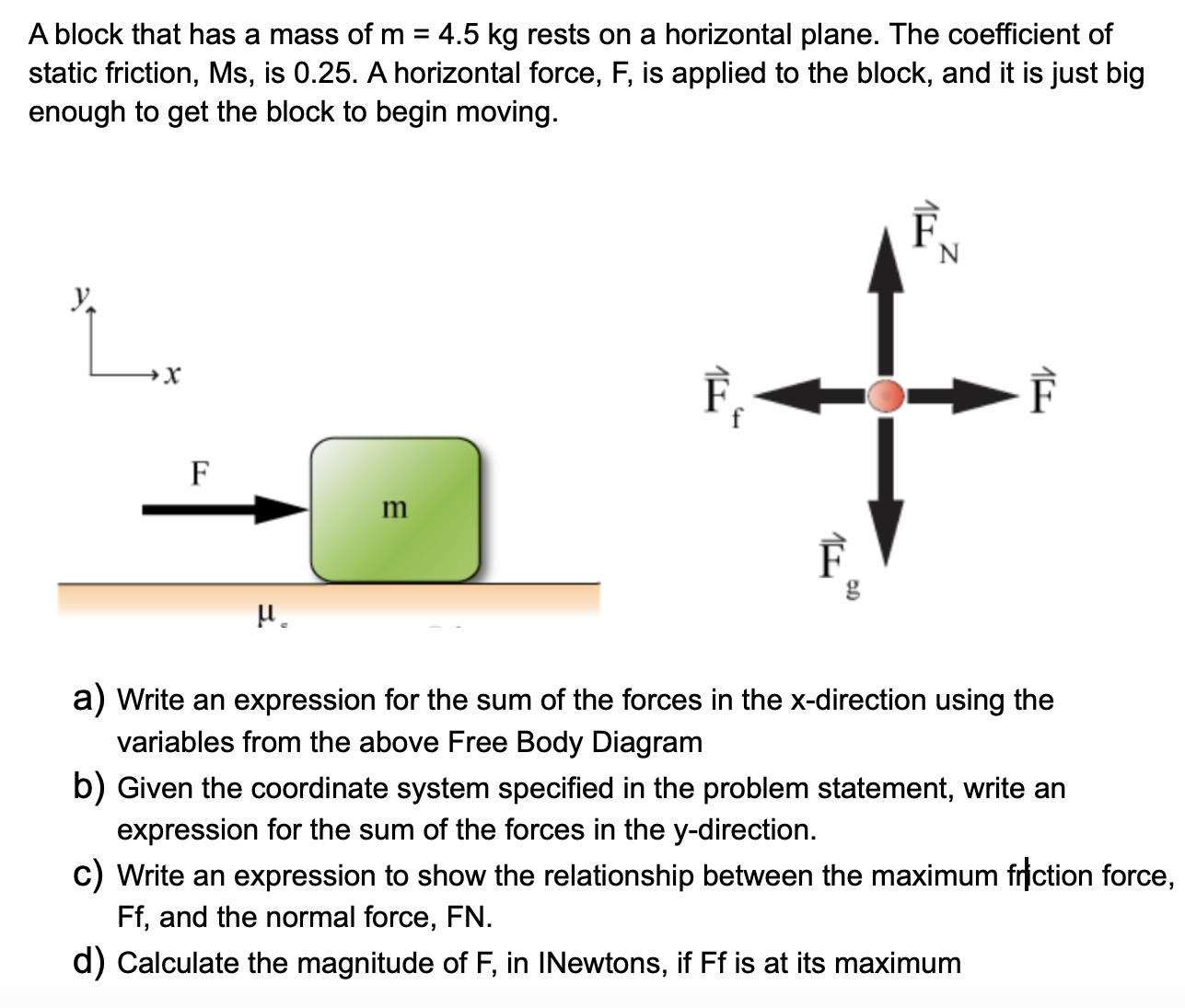A block that has a mass of m = 4.5 kg rests on a horizontal plane. The coefficient of static friction, Ms, is 0.25. A horizontal force, F, is applied to the block, and it is just big enough to get the block to begin moving. a) Write an expression for the sum of the forces in the x-direction using the variables from the above Free Body Diagram b) Given the coordinate system specified in the problem statement, write an expression for the sum of the forces in the y-direction. c) Write an expression to show the relationship between the maximum friction force, Ff, and the normal force, FN. d) Calculate the magnitude of F, in INewtons, if Ff is at its maximum
